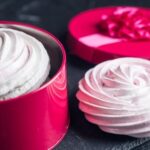Have you ever marveled at the beautifully decorated cakes in bakeries or on social media and wondered how to make a cake with fondant decorations? Fondant has become increasingly popular for cake decorating due to its versatility in creating intricate designs and its smooth, polished finish. In this comprehensive guide, we will delve into the art of cake decorating with fondant and provide you with the essential tools, ingredients, and step-by-step instructions to create your own stunning masterpiece.
The use of fondant for cake decorating has gained widespread appeal among baking enthusiasts, professional bakers, and even home cooks. Its ability to be molded into various shapes, such as flowers, figurines, and intricate patterns, makes it a favorite choice for those looking to add a touch of elegance and creativity to their cakes.
Fondant also offers a flawless finish that can give any cake a professional look, making it an ideal choice for special occasions such as weddings, birthdays, or other celebrations.
In this article, we will explore the essential tools and ingredients needed for making a cake with fondant decorations. We will also provide you with detailed instructions on baking the perfect cake from scratch or using a box mix.
Additionally, we will guide you through the process of preparing the fondant for decorating and creating various fondant decorations to adorn your cake. Whether you are new to cake decorating or looking to expand your skills, this guide will equip you with the knowledge and techniques needed to elevate your baking creations.
Essential Tools and Ingredients for Making a Cake With Fondant Decorations
When making a cake with fondant decorations, it’s essential to have the right tools and ingredients on hand. Some of the necessary tools for working with fondant include rolling pins, fondant smoothers, and fondant cutters. These tools will help you achieve a smooth finish and create intricate designs for your cake decorations. Additionally, having a good quality pastry brush and a sharp knife will also be beneficial for working with fondant.
In terms of ingredients, you will need the usual components for baking a cake such as flour, sugar, eggs, butter, and flavorings. However, when it comes to fondant decorations, you will also require specific ingredients such as pre-made fondant or the ingredients to make your own from scratch. This may include marshmallows, confectioners’ sugar (powdered sugar), shortening, and flavorings or colorings.
It’s important to ensure that you have all the necessary tools and ingredients prepared before starting the process of making a cake with fondant decorations. Having everything ready in advance will make the decorating process smoother and more enjoyable.
Step-by-Step Guide to Baking the Perfect Cake
Baking the perfect cake is essential when preparing for fondant decoration. Whether you choose to bake from scratch or use a box mix, there are certain key steps to follow to ensure your cake turns out just right for the application of fondant.
If you opt to bake from scratch, make sure to gather all necessary ingredients and measure them accurately. The type of cake batter you use will depend on the desired flavor and texture. For instance, a dense pound cake works well for fondant decorations as it provides a sturdy base, while a fluffy sponge cake may not hold up as effectively.
If using a box mix, follow the instructions on the package carefully and be sure not to overmix the batter, as this can result in a tough and dry cake. Once your batter is ready, pour it into greased and floured cake pans, making sure they are filled evenly for uniform baking.
After baking the cakes according to your recipe’s specified time and temperature, allow them to cool completely before moving on to covering them with frosting – a crucial step that creates a smooth surface for applying the fondant.
It’s important that your cakes are leveled and stacked neatly before adding fondant decorations. Taking these precautions ensures that your final product looks polished and professional. By following these steps closely, you’ll set yourself up for success when decorating your cake with fondant shapes or figures.
| Tip | Data |
|---|---|
| Baking method | Can choose between baking from scratch or using a box mix |
| Cake batter type | Dense pound cake provides a sturdy base for fondant decorations |
| Cooling time | Cakes must cool completely before covering with frosting and adding fondant decorations |
Preparing the Fondant for Decorating
When it comes to preparing fondant for decorating, the process involves several crucial steps to ensure that the final result is both visually appealing and delicious. Whether you are a beginner or an experienced baker, mastering the art of working with fondant is key to creating beautiful and professional-looking cakes.
Kneading and Rolling Out Fondant
One of the first steps in preparing fondant for decorating is properly kneading and rolling it out. Kneading fondant helps to soften it and make it more pliable, which is essential for shaping and molding. To do this, start by dusting your work surface with powdered sugar or cornstarch to prevent sticking. Then, using clean hands, gradually knead the fondant until it reaches a smooth and elastic consistency.
Once the fondant is adequately kneaded, the next step is rolling it out to the desired thickness. A rolling pin is essential for this task, and using guide rings can help achieve an even thickness throughout. It’s important to roll the fondant evenly so that you have enough material to cover your cake without it tearing or becoming too thin in certain areas.
Coloring and Flavoring Fondant
Another aspect of preparing fondant for decorating is coloring and flavoring it as desired. Gel-based food colors are recommended for tinting fondant, as they won’t alter its texture or consistency. Start by adding small amounts of color at a time, gradually kneading them into the fondant until you achieve the desired shade.
In addition to coloring, flavoring fondant can add an extra layer of deliciousness to your cake. Use extracts such as vanilla or almond to infuse flavor into the fondant while keeping its consistency intact. This step allows you to personalize your creation and surprise your guests with delightful flavors alongside stunning decorations.
Creating Fondant Decorations for the Cake
Once you have your fondant prepared, it’s time to start creating decorations for your cake. Whether you want to make simple shapes, intricate flowers, or adorable figurines, working with fondant allows you to unleash your creativity and add a personal touch to your cake.
One popular method of creating fondant decorations is by using molds and cutters. These tools make it easy to create uniform shapes and designs, perfect for adding visual interest to your cake. You can find a wide variety of molds and cutters at baking supply stores or online, ranging from basic geometric shapes to more complex patterns and designs.
If you’re feeling more adventurous, you can also try making freehand designs with fondant. This technique allows for total creative freedom and can result in truly unique and customized decorations for your cake. With a set of sculpting tools, you can mold the fondant into any shape or form that you desire, whether it’s animals, letters, or other fun embellishments.
Lastly, don’t forget about adding color and detail to your fondant decorations. Edible food coloring gels or dusts can be used to paint onto the fondant and add depth and dimension to your creations. Additionally, edible glitters or metallic paints can give your decorations a touch of sparkle and glamour that will make them stand out on the cake.
| Fondant Decoration Techniques | Examples |
|---|---|
| Using Molds and Cutters | Basic shapes, intricate patterns |
| Freehand Design | Sculpted animals, customized lettering |
| Coloring and Detailing | Painting with edible colors, adding glitter or metallic paint |
Covering the Cake With Fondant
After creating and preparing your fondant decorations, the next step in making a cake with fondant decorations is covering the cake with fondant. This step requires precision and patience, as achieving a smooth and flawless finish is essential for a professional-looking cake. Here’s a step-by-step guide on how to cover a cake with fondant:
1. Prepare the Cake: Before applying the fondant, make sure that your cake is level and has been properly iced with buttercream or ganache. This will provide a smooth surface for the fondant to adhere to.
2. Roll Out the Fondant: Dust your work surface with powdered sugar or cornstarch to prevent sticking, then roll out your fondant to about 1/4 inch thick. Make sure it’s large enough to cover the entire cake.
3. Drape the Fondant Over the Cake: Carefully lift the rolled-out fondant using a rolling pin and drape it over the top of the cake. Gently smooth it down over the sides of the cake, avoiding any air bubbles.
4. Smooth and Trim: Use a fondant smoother to gently press and smooth out any wrinkles or air bubbles in the fondant. Then trim off any excess fondant at the base of the cake using a sharp knife.
5. Finishing Touches: Once the entire cake is covered with fondant, you can add additional decorations such as ribbons or piping around the base of the cake if desired.
Covering a cake with fondant may take some practice, but with time and patience, you can achieve a professional finish that will beautifully showcase your fondant decorations. Next up: assembling and decorating your finished masterpiece.
Assembling and Decorating the Cake
After creating all the fondant decorations, it’s time to assemble and decorate the cake. Start by placing the cake on a turntable for ease of decorating. If needed, level the top of the cake with a serrated knife to ensure an even surface for decorating. Next, prepare a batch of buttercream or royal icing to use as “glue” for attaching the fondant decorations to the cake.
Carefully plan out the placement of each decoration on the cake before securing them with buttercream or royal icing. Begin with larger fondant pieces such as figurines or large flowers, then gradually add smaller details like leaves or tiny shapes. Use a small, soft brush to remove any excess powdered sugar from the fondant decorations before attaching them to the cake.
Once all the fondant decorations are in place, you can further enhance the appearance of the cake by adding finishing touches such as edible glitter, shimmer dust, or metallic paints. These extra elements can add depth and dimension to your cake design, making it truly stand out.
Remember that patience and precision are key when assembling and decorating a cake with fondant decorations. Take your time and enjoy the process of bringing your creative vision to life. With careful execution and attention to detail, you’ll be able to showcase a stunning finished cake that will impress everyone who sees it.
By following these steps for assembling and decorating your fondant-decorated cake, you will be well on your way to creating a beautiful masterpiece that not only looks impressive but tastes delicious too.
Troubleshooting and Tips for Success
Common Issues With Fondant Decorating
One of the most common issues when working with fondant is air bubbles. These can form when rolling out the fondant or when applying it to the cake. To prevent air bubbles, make sure to roll out the fondant evenly, and smooth it out gently as you apply it to the cake. If air bubbles do appear, simply prick them with a pin and gently smooth out the fondant again.
Another issue that many beginner decorators face is cracking or tearing of the fondant. This can happen if the fondant is rolled too thin or if it dries out while working with it. To avoid this, make sure to knead your fondant thoroughly before rolling it out, and work quickly but carefully when applying it to the cake.
How to Fix Common Problems
If you find that your fondant decorations are not sticking to the cake, you can use a small amount of water brushed onto the back of the decoration to help adhere it to the fondant-covered cake. Similarly, if your fondant is too sticky and difficult to work with, you can lightly dust your work surface and rolling pin with powdered sugar or cornstarch.
For those struggling with achieving a smooth finish on their fondant-covered cakes, using a fondant smoother can make a significant difference. Gently glide the smoother over the surface of the cake to eliminate any bumps or imperfections. If there are still areas that need smoothing, try using a small brush dipped in water to blend and smooth out any rough edges or seams.
Tips for Success in Fondant Decorating
It’s important for beginners to be patient and practice their skills when working with fondant. Rome wasn’t built in a day, and neither are perfectly decorated cakes. Take your time, watch tutorials online, and don’t be afraid to experiment with different techniques and designs.
Additionally, investing in good quality tools such as silicone rolling pins and durable cutters can make a world of difference in your fondant decorating endeavors. While these tools may seem like an extra expense at first, they will ultimately save you time and frustration in achieving professional-looking results.
By being mindful of potential issues, learning how to troubleshoot them effectively, and incorporating useful tips into your decorating process, you can elevate your skills in working with fondant decorations for stunning cakes that are sure to impress any crowd.
Conclusion
After following the step-by-step guide to baking and decorating a cake with fondant decorations, it’s time to showcase the finished product. The art of cake decorating with fondant allows for endless creativity and personalization, making each cake a unique work of edible art. Whether it’s a simple birthday cake or an elaborate wedding centerpiece, the final presentation of the cake is where all the hard work and attention to detail truly shine.
As the finishing touches are added to the fondant-decorated cake, it’s important to take a moment to appreciate the artistry and effort that went into its creation. From meticulously crafted fondant flowers to perfectly smooth covering, each element of the cake serves as a testament to the skill and dedication of the decorator. In this way, showcasing the finished cake not only highlights its visual appeal but also celebrates the creativity and craftsmanship behind it.
For those who have successfully completed their first fondant-decorated cake, sharing a photo of the finished product can be both rewarding and inspiring. It not only allows others to admire your handiwork but also serves as motivation for future projects.
Additionally, showcasing the finished cake can be a source of pride and accomplishment, especially when receiving positive feedback from friends, family, or clients. Ultimately, whether for personal enjoyment or professional purposes, displaying the finished cake is an important part of the cake decorating process.
Extra
In conclusion, creating a cake with fondant decorations is a delightful and rewarding experience. The art of cake decorating with fondant has gained widespread popularity due to its versatility and ability to transform ordinary cakes into stunning works of art. By using essential tools and following a step-by-step guide, anyone can master the technique of working with fondant to create beautiful and impressive cake decorations.
Once the cake is decorated with fondant, it is essential to know how to properly store and transport it. This extra step ensures that the intricate fondant decorations remain intact and the cake stays fresh until it reaches its final destination. By following some simple tips for preserving the integrity of the fondant decorations and packaging the cake carefully, bakers can successfully store and transport their fondant-decorated creations without any mishaps.
In showcasing the finished cake, it is important to emphasize the role of creativity and patience in cake decorating. Every fondant decoration is a result of careful craftsmanship and artistic expression. With dedication and practice, anyone can achieve professional-looking results when making a cake with fondant decorations. And by mastering the techniques outlined in this article, bakers can create visually stunning cakes that are sure to impress any audience.
Frequently Asked Questions
How Do You Put Fondant Decorations on a Cake?
To put fondant decorations on a cake, you’ll first want to make sure the cake is covered with a thin layer of buttercream or jam to help the fondant stick.
Then, you can roll out the fondant to your desired thickness, cut out the shapes you want for your decorations, and gently adhere them to the cake using a small amount of water or edible glue.
Can You Put Fondant Straight on a Cake?
Yes, you can put fondant straight on a cake, but it’s important to prepare the cake properly first. You’ll want to ensure that the cake is level and smooth, and then cover it with a thin layer of buttercream or jam before applying the fondant.
This will help the fondant adhere to the cake and create a smooth finish.
Can You Put Fondant Decorations on a Cold Cake?
It’s best to put fondant decorations on a cold cake rather than a warm one. Placing fondant on a warm cake can cause it to become sticky and lose its shape, so if your cake has just come out of the oven, allow it to cool completely before adding any fondant decorations.
Additionally, refrigerating the cake for a short time before decorating can also make it easier to work with fondant.

Welcome to my blog about home and family. This blog is a place where I will share my thoughts, ideas, and experiences related to these important topics. I am a stay-at-home mom with two young children. I hope you enjoy reading it! and may find some helpful tips and ideas that will make your home and family life even better!





